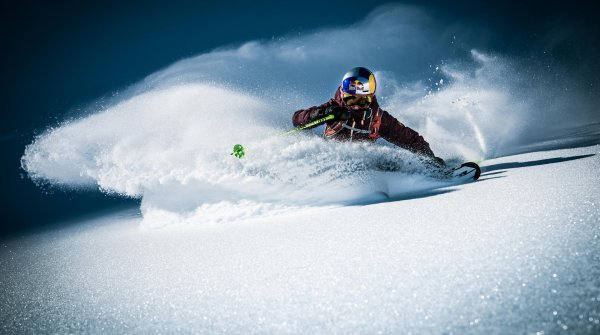
Skis off, boot buckles on - that's automatic for many skiers. And a sure sign that the ski boot is pinching them. But shin splints in boots are completely unnecessary. Customizable ski boots have long been available for a reasonable price.
The inner shoe is adapted to the foot of the buyer in the specialized store in series by heat reshaping. Otherwise, special insoles help, which take on the shape of the footbed, sometimes even the heels, through body heat alone and provide pressure-free support.
The size of the ski boot is determined without the inner boot. You slip in thin stockings the hard shell of the ski boot and slide your foot all the way forward into the toe. If the toes bump into each other with the body in an upright position, there must be 1.5 cm of space between the heel and the shell of the boot, because that is exactly how thick the usual inner boot is.
You don't need room to roll when skiing; the foot should sit snugly in the boot. In the typical skier's posture with bent knees, there is then automatically enough space and room to move again towards the toe.
The buckles should not only fit on the very last position, so that they are still adjustable with other socks, with additional pads and soles. It is important to tighten the ski boot only on the slopes, because in the cold the outer shell becomes even tighter and otherwise the blood in the leg could be painfully strangulated.
Cheap entry-level models often entice with the argument that they are particularly soft and do not pinch. In fact, the inner shoes in this type of offer are often particularly thick. Conversely, this means that they are compressed more by body weight than thinner inner shoes.
As a result, the ski boots feel bigger and bigger over time, and at some point, noticeably too big. As a result, the toes freeze faster, claw painfully into the sole, and power transmission and control become poorer.
In order for the ski boot to fit comfortably over the long term, other individual characteristics must be taken into account in addition to the length and the anatomical fit of the boot soles to one's own feet. These include the width of the foot, the height of the back of the foot and the thickness of the calves.
If the ski boot presses just a little at the ankle or at the end of the leg, the plastic shell, which is about 1 cm thick, can usually be milled out directly in the store without any problems in the places concerned. This type of correction is usually included in the purchase price at the retailer.
Experts recommend, if possible, to buy new ski boots only on the spot during the skiing vacation, so that you can go for touch-ups day after day if necessary.
If the problems are more serious, a "boot fitter" is needed. These specialists in ski boots make not only the shell but also the inner boot completely custom-made, for example by injecting foam between the foot and the shell and allowing it to harden.
There are certain tricks that you can use to widen your ski boots (for example, using the oven). However, the way to a specialist store is the right choice. You will be professionally advised and your ski boots properly adjusted.
There is also hope for those who until now have only been able to use costly custom-made products. Renowned manufacturers such as Fischer, Atomic and Nordica advertise ski boots that are up to "100 percent customizable" and can be reshaped in the store within ten minutes using thermal processes:
And this is what the manufacturing process of the individual ski boots looks like:
- In a kind of oven, the material is heated to about 80 degrees.
- Then the customer gets into the shoe with thin socks and has to remain still for a few minutes.
- If the boot then still pinches, it can be heated and adjusted up to five times without the properties of the plastic suffering.
A precise reshaping of the shell with infrared heat at the problem areas by a negative pressure suction cup has been invented by Nordica. The ski manufacturer won the ISPO Award in the Alpine Boots category for this with its "Speedmachine 130" model.
The jury's verdict: "What we liked about this product is that you can adjust the sporty boot quickly and efficiently with a device that doesn't affect the whole boot, but only the area affected in each case. A great benefit for end users and retailers."
Perfectly fitting shoes are ultimately not only a question of comfort, but also of safety.
The right footwear helps prevent pain, but proper preparation also plays a crucial role. Strength training successfully prevents cramps and makes you less susceptible to calf pain.
 PeopleBetween soaring and crashing
PeopleBetween soaring and crashing
- ISPO awards
- Mountain sports
- Bike
- Design
- Retail
- Fitness
- Health
- ISPO Job Market
- ISPO Munich
- ISPO Shanghai
- Running
- Brands
- Sustainability
- Olympia
- OutDoor
- Promotion
- Sports Business
- ISPO Textrends
- Triathlon
- Water sports
- Winter sports
- eSports
- SportsTech
- OutDoor by ISPO
- Heroes
- Transformation
- Sport Fashion
- Urban Culture
- Challenges of a CEO
- Trade fairs
- Sports
- Find the Balance
- Product reviews
- Newsletter Exclusive Area
- Magazine



